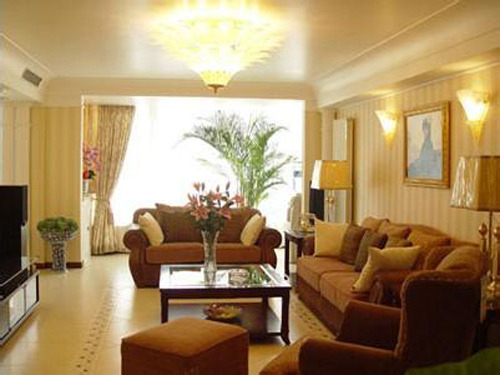Lamps have more light sources, household lamps are more common light sources are incandescent, fluorescent, energy-saving lamps and LED lights several. Let's take a look at the characteristics of these four light sources and the applicable space.
Brass Waste Coupling Sink Drain Sink Waste Overflow
Wash basin push button stopper sink pop up Waste Coupling
Waste Coupling Waste Coupling,Brass Waste Coupling,Zinc Waste Coupling,Drain Sink Coupling Yuyao Sanyin Bathroom Technology Co Ltd , https://www.chinasanyin.com
1. An incandescent light bulb is also called a light bulb. Its working principle is that electric current generates heat when it passes through a filament (tungsten wire, which has a melting point of more than 3,000 degrees Celsius). The spiral filament continuously collects heat, making the temperature of the filament above 2000 degrees Celsius. The filament is When in an incandescent state, it glows like a red-hot iron glows. The higher the temperature of the filament, the brighter the light emitted. It is called an incandescent lamp.
Advantages: Small light source, a wide variety of lampshades; versatility, color variety, with orientation, scattering, diffusion and other forms; can be used to enhance the three-dimensional object, incandescent lamp color light closest to the sun color.
Disadvantages: No environmental protection is the biggest drawback. When using incandescent lamps, 95% of the electrical energy is spent on heating. Only 5% of the electrical energy is actually converted into visible light. The temperature of heat is high, the heat is evaporated quickly, and the life is Short (1000 hours), high infrared content, easily affected by vibration, low color temperature, yellow.
2. Fluorescent lamps are also called fluorescent lamps. The fluorescent tubes contain argon gas (also containing helium or neon) and a few drops of mercury. By the mercury atoms of the lamp tube, ultraviolet light is released by the process of gas discharge, and ultraviolet light is absorbed by the fluorescent material on the inner surface of the lamp tube to release visible light. Different fluorescent substances emit different visible light.
Advantages: Energy saving. About 60% of the electrical energy consumed by fluorescent lamps can be converted to ultraviolet light. Other energy is converted into heat energy. The efficiency of converting ultraviolet light to visible light is about 40%. Therefore, the efficiency of fluorescent lamps is about 60% x 40% = 24% - approximately twice that of the same power tungsten lamp.
Disadvantages: It will produce light decay. The color rendering of fluorescent lamps is inferior to that of incandescent lamps. There are flickering lights and some influence on eyesight. In addition, mercury pollution occurs during and after use.
3, energy-saving lamps, also known as compact fluorescent lamps, light-emitting principle and no significant difference between fluorescent lamps. However, the energy-saving lamps are relatively small in size, and they use less electronic ballast and reduce stroboscopic flicker.
Advantages: high luminous efficiency, more than five times that of ordinary incandescent lamps, energy-saving effect is obvious; long life, is about 8 times that of ordinary light bulbs; and small size, easy to use.
Disadvantages: It will produce light decay; low color rendering, incandescent lamp and halogen lamp color rendering performance of 100, perfect performance; energy-saving lamps color rendering mostly between 80 and 90, low color light source not only see things not beautiful It is also harmful to health and vision.
4, LED lights, also known as light-emitting diodes, it is a solid-state semiconductor devices, can directly convert electricity into light. The heart of the LED is a semiconductor wafer consisting of three parts, one part is a P-type semiconductor and the other is an N-type semiconductor. This side is mainly electrons, usually with 1 to 5 cycles of quantum wells in the middle. When current is applied to the wafer through the wire, electrons and holes are pushed into the vector well. In the quantum well, electrons recombine with holes, and then they emit energy in the form of photons. This is the principle of LED light emission.
Advantages: LED lights have many advantages such as small size, low power consumption, long life, non-toxic environmental protection, etc. It was originally applied to outdoor decoration, engineering lighting, and now it has gradually developed into home lighting.
Disadvantages: expensive, need constant current drive, heat treatment is not easy to light fade.
Summary: The light source is the core of the lamp. Different light sources have different color temperature, energy saving, etc., and everyone needs to decide according to their own needs and prices. Next, look at the luminaires that need to be taken into account when considering the styling and space applicability.
Details & Features:
1 1/4" Chrome plated brass, small cap , clic-clac wash basin waste , withoverflow, 62mm flange x 76mm long chrome plated brass sleeve, chrome plated cast brassbacknut, with chrome plated brass extension pipe
Type:
Clic-Clac, Push Up, Push Down
Size:
G1 1/4"
Material:
Brass
Finish:
Chrome plated
Samples
Free samples avaliable (Freight is not included)
MOQ:
500pcs
Payment method:
L/C or T/T
Lead time:
15~30 days for different qty orders, contact me for details
Package:
Outer packaging: Carton Box
Inner packaging: white/colour box or blister package or customized
Shipping:
For samples: 3-7 days
For goods: 10-30 days
